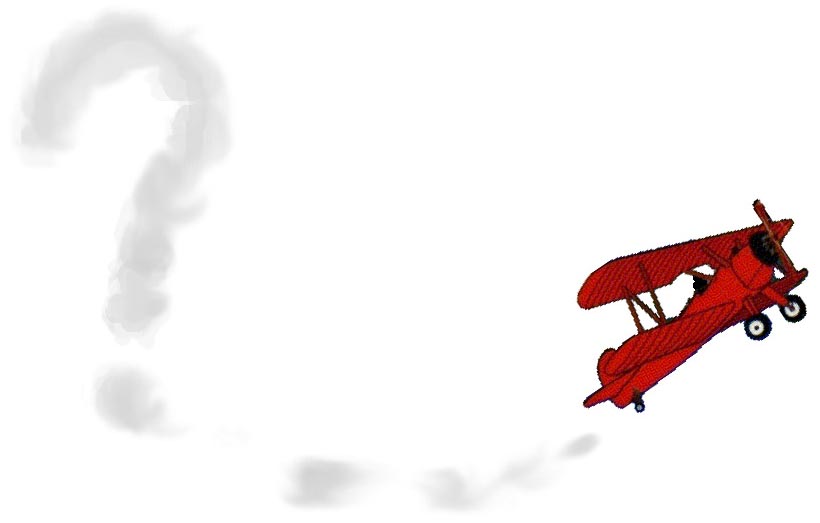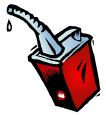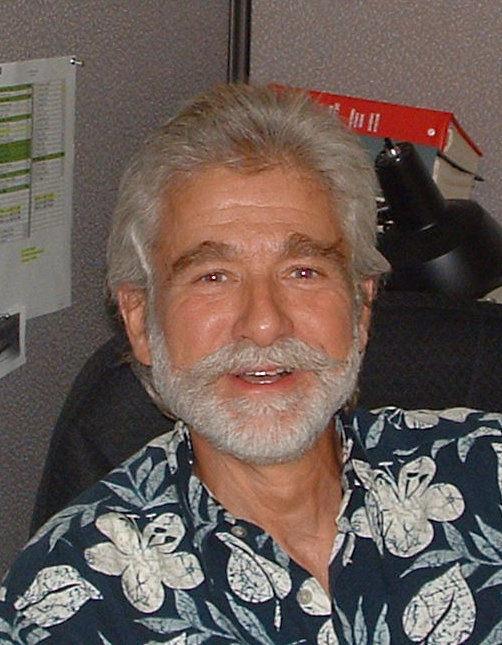

As in previous “interactive” issues of CALLBACK, readers are once again given the opportunity to consider an appropriate course of action for a given situation. The actions that were actually taken by the reporters of these incidents are found on the reverse of this CALLBACK issue. Bear in mind that the reported action may or may not represent the best response to the situation. Our intent is to stimulate thought and discussion about the types of incidents reported.
Situation #1: "The Ride Then Went from Smooth to Violent"
For a Part 135 flight crew on a night flight, maintaining wings level became a full-time job with an autopilot malfunction, severe turbulence, icing, and crew member injury.
-
Upon leveling off, the autopilot was not maintaining the 14,000 as selected. At 14,100, I reselected 14,000 and it corrected back down. Within seconds we were at 14,400 when I said to the Captain, “What is wrong with the autopilot, how come it won’t hold altitude?” The Captain then disconnected the autopilot and pitched down to correct for the uncommanded climb. The ride then went from smooth to violent. I pulled both throttles back to idle as soon as I was able. It was so rough that it was impossible to control your arms and legs at times. Both of us hit our heads on the breaker panel...Initially I heard a hissing sound and thought decompression and mask. Then no mask, we are only [at] 14,000 feet. The hissing was a burst beverage container or my mask [was] out of its holster and purging, I don’t know for sure. The Captain had a severe cut on his head and was bleeding...The airframe was covered with ice and a generator was offline.

Situation #2: "Both Front Windshields
Became Fully Obscured in Oil"
An instrument-rated pilot of a single-engine aircraft departed the airport on a VFR pleasure flight. The pilot contacted Approach Control and requested clearance through Class B airspace...
-
Clearance was obtained with an initial climb to 6,000 feet MSL. Approximately two minutes after leveling off at 6,000 feet MSL, began to notice fine oil mist on front windshields. Advised Approach of situation and requested immediate return to [departure airport]. Clearance received and executed 180-degree turn to right. Situation rapidly deteriorated, as both front windshields became fully obscured in oil. Aircraft engine oil pressure and temperature gauges [were] normal.

Situation #3: "I Noticed Numerous Lightning Strikes on the Skin"
A maintenance technician performing a service check on a B737 noticed numerous signs of lightning strikes, but was puzzled by the absence of a report from the flight crew.
-
Aircraft came into ZZZ with a service check and some assigned work attached to the package. The book was clean and the flight crew reported no problems with the aircraft. I began my service check walkaround ground visual [inspection] of the aircraft and when I got to the left-hand forward fuselage area, I noticed numerous lightning strikes on the skin starting from the nose radome working aft past the wing-to-body fairing. Upon further investigation I found the left-hand forward alternate static port had 3 each lightning strikes which had welded the surface of the static port...In my experience this was a pretty good strike, and I had not even been up to the aft fuselage or the tail yet to look for the exit point...What was puzzling was the clean book with no pilot report from the flight crew. I assume with this much damage the flight crew would definitely know if they had been hit by lightning.

Situation #4: "The Aft Jumpseat had Broken..."
The presence of Flight Attendants in the cabin during landing ensures that in case of an incident (such as an aircraft evacuation), safety leadership will be provided to the passengers. When a Flight Attendant jumpseat breaks on a full aircraft, that Flight Attendant must be seated somewhere else for landing – but where?
-
About 3⁄4 into our flight we received a call from the ‘B’ Flight Attendant. She informed us that the aft Flight Attendant jumpseat had broken and was now uninhabitable and unsafe to occupy. Apparently it had come off of a support mechanism and was leaning at a steep angle toward the floor. For this flight, we had 137 passengers, 3 Flight Attendants, and one rider on the fourth Flight Attendant jumpseat.
We queried if the jumpseat would be safe to occupy for landing. They all agreed it would not be safe.

The Rest of the Story –
The Reporters’ Actions
Situation #1: "The Ride Then Went from Smooth to Violent"
-
[The Captain] continued to fly and claimed to be OK...We reported our status with Center and I believe they declared us an emergency aircraft. As PNF I activated the aircraft’s ice protection which worked well. We began load reduction [and] I ran the appropriate checklist for the generator off and it was restored. The remaining flight was unremarkable.
I reviewed the flight log...and it indicated a maximum altitude loss of 2,000 feet. This is my biggest concern. Maintaining wings level was a full-time job during this event, with severe turbulence. I commend my Captain. I think good CRM probably saved our lives. During this event I found myself doing only the things which have been “overlearned.” In the future I will pipe up and ask for deviations around all clouds when possible, and if anyone is ever injured in flight I will suggest the use of oxygen. We may need all the help we can get.
Situation #2: "Both Front Windshields
Became Fully Obscured in Oil"
-
[I] contacted Approach and requested priority handling to [departure airport]. Clearance obtained and then instructed to contact Tower. Contacted Tower and advised them of our situation. Tower wanted to know...which runway we requested...Requested Runway 25L and to roll the Crash/Fire equipment. Both front windshields still totally obscured in oil, and now canopy side windows becoming obscured in oil. Therefore requested Runway 30 due to the fact that it is the longest and widest runway at the airport, and is also served with an ILS approach. Forward visibility continued to be zero. Entered on left base for Runway 30, but had to extend...the downwind to lose altitude and airspeed to lower the landing gear at 100 mph...As aircraft slowed on final approach, oil clung to all windows. Forward visibility zero. Peripheral vision marginal. Attempted to open canopy window without success. Performed zero flap landing with power and minimal sink rate until aircraft landed. Aircraft stayed on the runway at all times, opened canopy, taxied off active runway and shut down engine.
Situation #3: "I Noticed Numerous Lightning Strikes on the Skin"
Situation #4: "The Aft Jumpseat had Broken..."
- The First Officer and I discussed having the ‘B’ Attendant and fourth rider sit in the cockpit jumpseats for landing. We both felt that this was the safest alternative. Of the 137 passengers, there were none authorized to sit in the cockpit. We decided to have the ‘B’ Attendant and fourth rider in the cockpit for landing for their safety.
I did think of the fact that in the event of an evacuation, there would be no Flight Attendant at the rear of the aircraft. However, I felt that I needed to opt for the safety of the Attendants during the landing and rollout portion of the flight. I did not want them just holding onto something in the back for the unlikely event of an evacuation.
We arrived [at destination] uneventfully and the aft jumpseat was deferred via the MEL. Additionally, we informed Ground Operations of our situation.
This situation probably had no perfect solution – but what would you have done?
Meet the Staff
Rich Bourque
 Richard (“Rich”) Bourque joined the ASRS staff as an Aviation Maintenance analyst in April 2007. Rich has a long-time association with the ASRS program as a maintenance representative on the NASA ASRS Advisory Subcommittee. In his years with the ASRS Advisory Subcommittee, Rich helped develop the ASRS maintenance reporting form and encouraged aviation maintenance technicians to support and use the ASRS program. Richard (“Rich”) Bourque joined the ASRS staff as an Aviation Maintenance analyst in April 2007. Rich has a long-time association with the ASRS program as a maintenance representative on the NASA ASRS Advisory Subcommittee. In his years with the ASRS Advisory Subcommittee, Rich helped develop the ASRS maintenance reporting form and encouraged aviation maintenance technicians to support and use the ASRS program.
Rich has a long and distinguished career as an Airframe/Powerplant Inspector, mechanic, and leader of a Local Lodge of the International Association of Machinists and Aerospace Workers. In his early maintenance career, he served with the U.S. Marine Corps, an East Coast FBO, and Western Airlines in San Francisco. In 1985 he joined United Airlines in San Francisco as an Airframe/Powerplant mechanic, eventually rising to the position of Inspector. During this same period he held a variety of offices with Local Lodge 1781 of the IAMAW—including President. Rich retired from United in April 2007.
Outside ASRS, Rich enjoys his family, politics, music, natural sciences, ice hockey, his dog, motorcycles, gardening, live theatre, horse riding and racing—and always airplanes.
|

